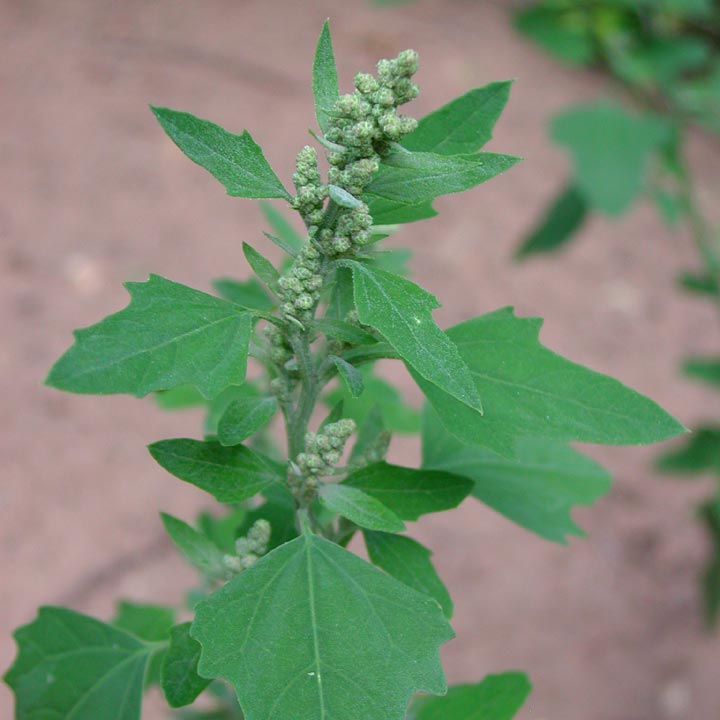
|
Family: Amaranthaceae |
Herbs, annual or perennial [rarely suffruticose, or small trees], farinaceously pubescent with small white inflated hairs or glabrous. Stems erect to prostrate, branched (rarely simple), not jointed, not armed, not fleshy. Leaves alternate, petiolate or sessile, not fleshy; blade linear, oblong, lanceolate, ovate, triangular, trullate, or rhombic, flattened, not jointed, not spinose, base truncate, cordate, hastate, or cuneate, margins entire, dentate, sinuate, or serrate, apex acute to acuminate or obtuse, occasionally lobed. Inflorescences spicate and terminal or axillary glomerules; bracts usually absent or leaflike but narrower than leaves. Flowers bisexual (rarely unisexual, then terminal flower male or bisexual and lateral flowers female), bracteoles absent; perianth segments (3-)5, usually connate at base, sometimes almost to middle or beyond, not imbricate, rounded or keeled abaxially, wings and spines absent; stamens 5 or fewer; ovary superior; style 1 or absent; stigmas 2(-5), filiform. Fruits utricles or achenes, often enclosed in infolded perianth, indehiscent or irregularly dehiscent; pericarp membranaceous or chartaceous, adherent or nonadherent. Seeds horizontal or vertical [rarely oblique], lenticular to subglobose; seed coat black, brown-black, or reddish brown; embryo annular or hippocrepiform (horseshoe-shaped), surrounding copious farinaceous perisperm; radicle inferior or centrifugal. x = 9. Chenopodium quinoa Willdenow (quinoa) is cultivated occasionally as a grain crop. It will key to Chenopodium berlandieri and is related to it. It generally has larger leaves and inflorescences and light-colored seeds. Seeds are generally flattened and lentil-like. The equatorial edge (here called margin) may be rounded, flattened, or grooved. The surface is usually honey combed or smooth. All leaf characteristics refer to primary, well-developed leaves; those often fall early, however, so smaller, upper leaves often are shorter, narrower, and less lobed.
Fls perfect (seldom some of them pistillate); cal persistent, mostly 2-5-parted (most commonly 5-, less often 3-), the short, usually blunt segments commonly incurved over the fr (cal only shallowly lobed in one sp.); stamens 1-5, typically isomerous with the cal-lobes; styles 2(-5); fr laterally compressed (the seed erect) or more often flattened across the top (the seed horizontal), thin-walled, the pericarp often adherent to the ±lenticular seed; embryo annular; ours herbs (most spp. annual) with entire or toothed to ±deeply lobed lvs and small, greenish to reddish fls, these in most spp. sessile in glomerules (the glomerules either axillary or in terminal spike-like or panicle-like infls), but in other spp. in compact cymes that may collectively form a thyrse, or otherwise disposed. (Blitum, Roubieva) 100+, cosmop. Gleason, Henry A. & Cronquist, Arthur J. 1991. Manual of vascular plants of northeastern United States and adjacent Canada. lxxv + 910 pp. ©The New York Botanical Garden. All rights reserved. Used by permission. |
This project was made possible in part by the Institute of Museum and Library Services [MG-70-19-0057-19].
Powered by Symbiota



